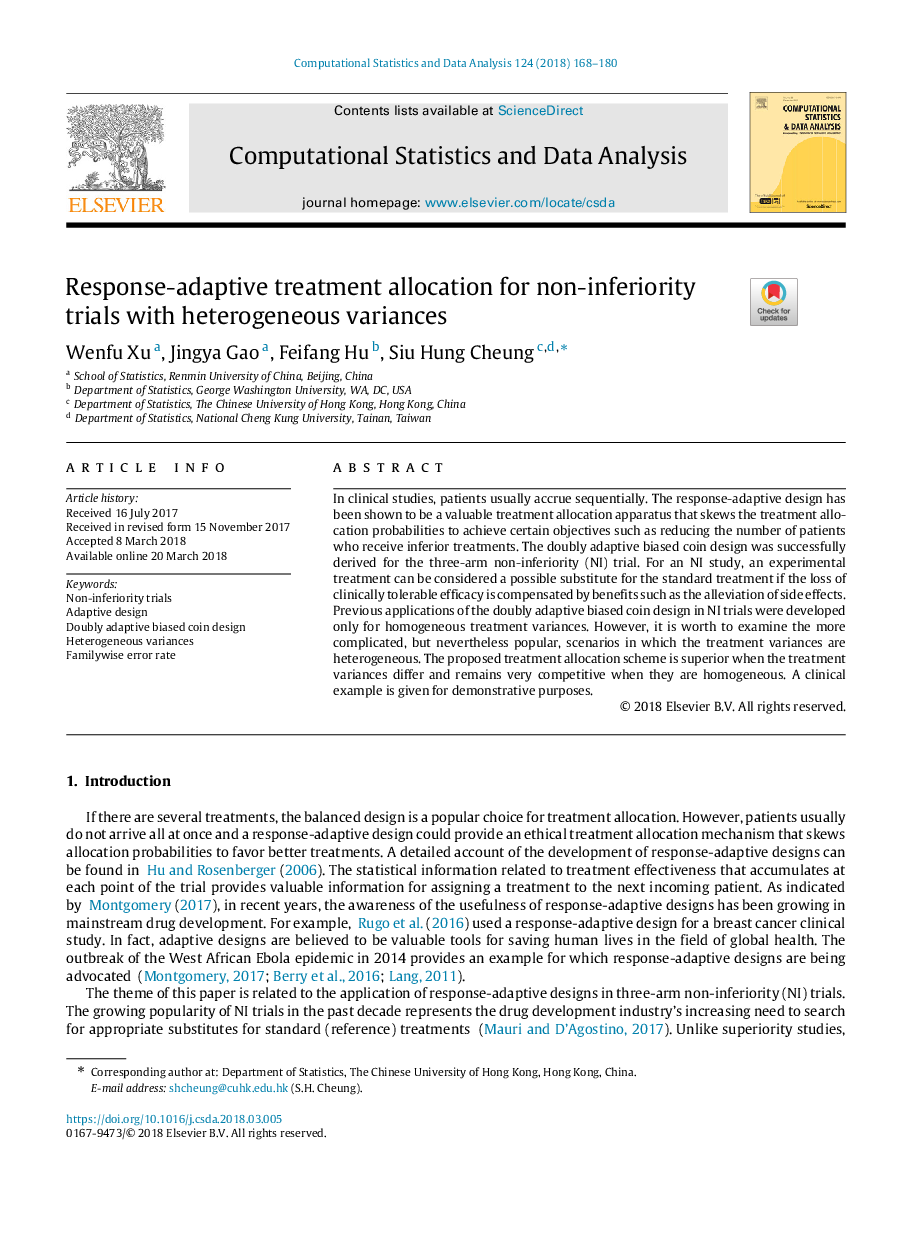| Article ID | Journal | Published Year | Pages | File Type |
|---|---|---|---|---|
| 6868710 | Computational Statistics & Data Analysis | 2018 | 12 Pages |
Abstract
In clinical studies, patients usually accrue sequentially. The response-adaptive design has been shown to be a valuable treatment allocation apparatus that skews the treatment allocation probabilities to achieve certain objectives such as reducing the number of patients who receive inferior treatments. The doubly adaptive biased coin design was successfully derived for the three-arm non-inferiority (NI) trial. For an NI study, an experimental treatment can be considered a possible substitute for the standard treatment if the loss of clinically tolerable efficacy is compensated by benefits such as the alleviation of side effects. Previous applications of the doubly adaptive biased coin design in NI trials were developed only for homogeneous treatment variances. However, it is worth to examine the more complicated, but nevertheless popular, scenarios in which the treatment variances are heterogeneous. The proposed treatment allocation scheme is superior when the treatment variances differ and remains very competitive when they are homogeneous. A clinical example is given for demonstrative purposes.
Related Topics
Physical Sciences and Engineering
Computer Science
Computational Theory and Mathematics
Authors
Wenfu Xu, Jingya Gao, Feifang Hu, Siu Hung Cheung,
